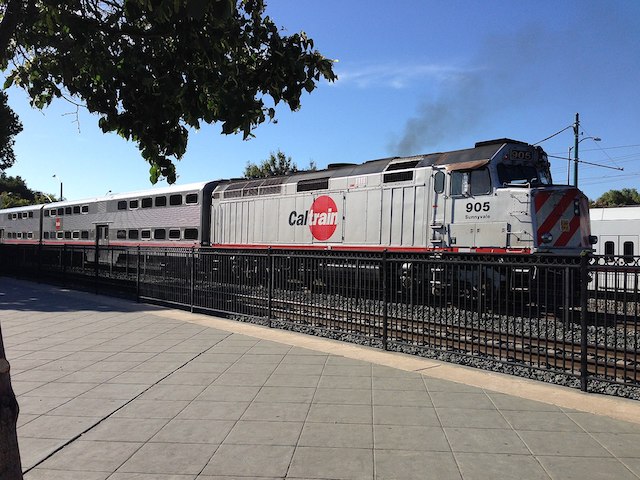“An oddity of American public transit,” says Strong Towns, a semi-New Urbanist organization dedicated to compact cities and transit, “is the prevalence of commuter rail lines designed to do one thing and one thing only: bring 9-5 office workers to and from downtown.” The Facebook post then links to an article in Governing magazine titled, Taking the Commuter out of Commuter Rail, which claims the huge decline in commuter-rail ridership is an “opportunity to reinvent the suburb-city service.”
CalTrain is a classic example of Type 1 commuter rail, having once been operated by Southern Pacific. In 2019 fares covered 75 percent of its operating costs and it used less energy per passenger mile than a Toyota Prius. But as of June its ridership was down 88 percent. Photo by Runner1928.
Before critiquing these ideas, it is important to point out that there are really two kinds of “commuter-rail” operations; call them Type 1 and Type 2. Type 1 is traditional big-city commuter trains, which were usually started by private railroads in the nineteenth century and were taken over by government agencies in the 1960s and 1970s. These brought suburban workers into downtown Boston, Chicago, New York, Philadelphia, and San Francisco. This is the commuter rail that Strong Towns and Governing are writing about. Continue reading








